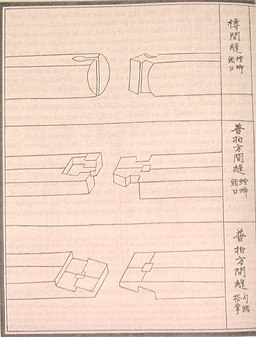Yingzao Fashi is the romanization of the Chinese term meaning roughly “State Building Standards.” It is the title of a landmark work in the history of Chinese architecture, first published in 1103 AD by Emperor Huizong of the Song Dynasty. It had been compiled in 1100 AD by the then-Superintendent of State Buildings, legendary architect Li Jie (1065-1110 AD).
The Yingzao Fashi was the end result of Li’s monumental effort to consolidate hundreds of years’ worth of knowledge of building techniques and standards into one uniform standard, and one instruction manual to be used throughout the Empire to construct official buildings.
In my opinion, there are two things (among the many, many things) that make the Yingzao Fashi particularly fascinating to me:
First, it utilizes an ingenious and completely modular and scalable building system, using a very strict and limited set of component parts — a system which produces stunningly beautiful and incredibly durable buildings.

Second, the system is based on the centuries-old traditional building method found in China and Japan, that uses only interlocking joinery (think large and sophisticated Lincoln Logs) and no fasteners (nails, pegs, and so on).

It’s not clear to me from the readings, the length of time that the Yingzao Fashi remained the standard, but I at least know there was a second edition published in 1145 AD, and that parts of it were found included in the court documents of the much-later Qing Dynasty (1644-1911 AD). The work was rediscovered and reprinted in 1932, spurring a renewed interest in traditional Chinese architecture around the world.
As for the durability of the buildings, according to author Qinghua Guo, some are still standing, though certain affected by the centuries and by more modern renovation.
For further reading on the subject, I highly recommend the article written by Qinghua Guo for Architectural History, vol. 41 (1998), titled “Yingzao Fashi: Twelfth-Century Chinese Building Manual.”

Leave a comment